
KEYNOTE SPEAKER
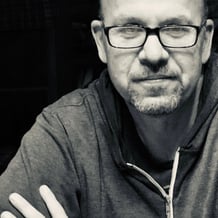
Make Your Value Stream Network Visible - Chris Gallivan
Chris is a Principal Flow Advisor at Planview Tasktop. Chris advises large, Fortune 500 organizations on making work visible, and improving the flow of value to customers. Prior to joining Tasktop, Chris had two decades of experience improving flow in the automotive industry at Chrysler. His experience ranges from DevOps Dojos to Platform Engineering, from traditional software to embedded systems. Chris has previously spoken at DevOps Enterprise Summit 2018, IIBA BAcon 2022, and numerous other local events in the Midwest. In this session we will talk about the number one barrier to flow in large organizations - the value stream network. An organization’s value stream network is the set of interconnected hops a unit of value must take in order to make it to your customer. Think of it like an airline route map. Have you ever wondered why all your teams seem to be doing great on the DORA metrics, yet it still takes far too long to deliver value to customers? The answer probably lies somewhere hidden in your value stream network. Leave this session with helpful tips on how to visualize and improve your value stream network.
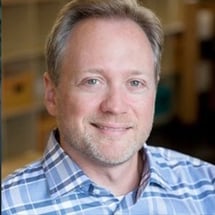
Master of Ceremonies -John Krewson
John is the founder and CEO of Sketch. He started Sketch in service to the mission of improving the ways people and teams work together. Sketch Development Services is a software development studio that provides Agile and DevOps coaching, consulting and training. Sketch delivers software for its customers using Agile principles and practices, and helps organizations through their Agile transformations. John has been an active member of the Agile community since 2003 as a developer, ScrumMaster, product development leader and coach. He has worked with dozens of companies from startups to the Fortune 50 to help them learn, adopt, and apply Agile, Scrum, and Lean/Kanban principles and practices. His past experiences as an Agilist and professional actor are the primary sources of inspiration in leading this mission. John will serve as Master of Ceremonies for the DevOps Midwest event and will provide welcome remarks to kick us off and wrap up with insights from the day.
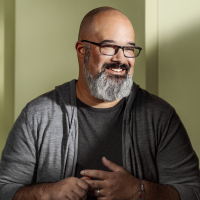
Deploying a Simple Python App to Kubernetes/OpenShift -JJ Asghar
JJ works as a Developer Advocate representing the IBM Cloud worldwide. He mainly focuses on the IBM Kubernetes Service and OpenShift, trying to make companies and users have a onboarding to the Cloud Native ecosystem. If he isn’t building automation to streamline his work, he’s building the groundwork to do just that. JJ will walk you through deploying a simple python application to Kubernetes/OpenShift. We’ll start from the ground up, then get a complete automated build. The goal is to enable your developers to focus on code, not the infrastructure!
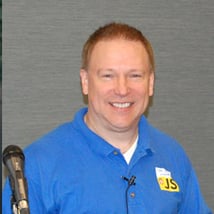
Beyond Lambdas: Using AWS ECS to Scale Long Running Jobs Up and Back Down - Jeff Barczewski
Jeff is a software engineer with 30+ years of professional experience. He enjoys researching the latest technology trends to find the best pragmatic solutions and sharing this with others. When he's not working you might find him on top of a snowy mountain riding a pair of skis. His talk will explain how to create scalable, cost-effective services and queues in a serverless fashion with AWS ECS. Using this approach teams can take advantage of unlimited run times and advanced hardware beyond that which is available for serverless functions (like AWS Lambda)
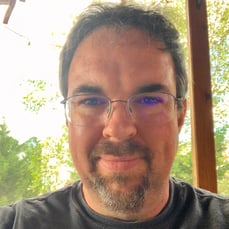
Getting from “DevSecOps” to DevSecOps: What Has Worked and What Hasn’t- Yet -Gene Gotimer
Gene Gotimer is a DevSecOps Engineer who loves playing with new tools, focusing on agile processes, securing development practices, and automating everything. Gene feels strongly that repeatability, quality, and security are all strongly intertwined; each depends on the other two, making agile and DevSecOps crucial to software development. In this session, Gene shares that there is a lot of talk about adopting DevSecOps in federal agencies. “We’ll do whatever it takes to make DevSecOps work! But we can’t change our process, practices, or people.” Gene Gotimer has been working with government agencies since 2009, convincing them that DevSecOps is achievable and worth the effort. Sometimes they aren’t sure why they should change. Sometimes they are convinced “it can’t work here.” Most of the time, they just can’t get out of their way. But every effort has led to a mix of wins and losses. Join Gene as he talks about some lessons learned, good and bad, trying to get from “DevSecOps” to actual DevSecOps in big organizations.
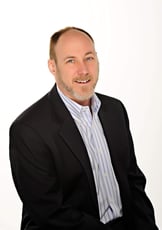
Security Lifecycle for Cloud Native Applications - Mark Hahn
Cybersecurity is now critical to development teams as data breaches increase and ransomware becomes prevalent. Development teams need to find common ground with IT operations and information security departments to build and deliver solidly secure cloud native applications. Key steps to implement security need to be added to the development, testing, deployment, and production phase of application development. This talk covers why development teams need to adapt cybersecurity as a development responsibility and the implementation techniques that can be used.
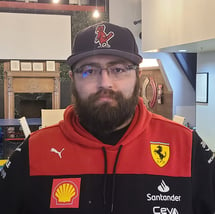
Swimming with Whales - Containerize Your Application Just Like the Big Guys -Matt House
Matt is a recovering developer that still gets excited when hears the "Ribbit" of someone starting up Toad. After spending some time in the world of project management, Matt was convinced there had to be a better way to develop software. Matt helps organizations implement lean program management best practices and build environments that people actually want to work in. Matt is co-hosting this session with fellow speaker Ryan Jensen. As is common knowledge, lots of organizations are now taking applications, whether legacy apps or new ones, and "containerizing" them. There are lots of benefits: security, portability, scalability, predictability...And it is not just for LARGE organizations - it is not financially or technically out of reach from doing the same with smaller apps, microservices or proof-of-concepts. So, how do YOU get these same benefits?? Join this hands-on session and build our own container image and then work together on a "legacy" app by building and modifying a Dockerfile for it, “deploy” several different versions of it while also considering the option of rollbacks, and if we have time, we’ll simulate hardened security by building on top of “golden images.” PREREQUISITE: Computer, Git Client, Docker, Text Editor or IDE.
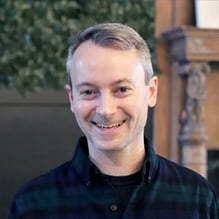
Swimming with Whales - Containerize Your Application Just Like the Big Guys -Ryan Jensen
Ryan has been developing software with ,NET, C#, Java, Ruby on Rails, node.js, since 2003 and is a MSSQL ninja. He began working on AWS in 2009 and now most of his project include some component of Infrastructure as Code. Cloud Formation, CDK and Terraform are his tools of choice but he won't turn away an opportunity to work with Docker, Kubernetes or Helm. Ryan is co-hosting this session with fellow speaker Matt House. As is common knowledge, lots of organizations are now taking applications, whether legacy apps or new ones, and "containerizing" them. There are lots of benefits: security, portability, scalability, predictability...And it is not just for LARGE organizations - it is not financially or technically out of reach from doing the same with smaller apps, microservices or proof-of-concepts. So, how do YOU get these same benefits?? Join this hands-on session and build our own container image and then work together on a "legacy" app by building and modifying a Dockerfile for it, “deploy” several different versions of it while also considering the option of rollbacks, and if we have time, we’ll simulate hardened security by building on top of “golden images.” PREREQUISITE: Computer, Git Client, Docker, Text Editor or IDE.

Containerizing Legacy Apps with Dynamic File Based Configurations & Secrets -Andrew Kirkpatrick
Software Development Engineer and DevOps enthusiast from the middle of England. Survived the wild west of web development, building infrastructure for web applications along the way, albeit often haphazardly amidst a variety of automation. Slow cyclist, bedroom DJ, retro gaming enthusiast and mechanical keyboard junkie. In this session, Andrew confers that most modern applications are designed with containers in mind, or older projects are updated to be run within them. But what if you don’t have the time, resources or the authority to modify your applications? Building greenfield projects in containers is cool and all, but what about your in-house legacy applications, or open-source projects you’ve come to rely on? How do you handle on-the-fly configuration changes or dynamic secrets management, but without modifying your code? Join Andrew to learn a few ways to tackle this challenge.
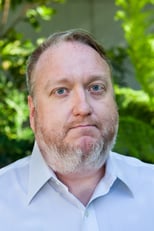
Stop Committing Your Secrets - Git Hooks To The Rescue! –Dwayne McDaniel
Dwayne has been working as a Developer Relations professional since 2015 and has been involved in tech communities since 2005. He loves sharing his knowledge, and he has done so by giving talks at over a hundred events worldwide. Most devs are familiar with using .env and .gitignore files to help prevent Git from tracking specific files and folders. But did you know that you can leverage Git hooks, and some open source awesomeness, to keep from accidentally committing your secrets in the first place? No one wants their keys, passwords, and other secrets exposed. Ideally, no developer would ever hardcode anything like that into their work, but unfortunately, a lot of repos are just one bad push from the world gaining access to sensitive data and mission-critical systems.
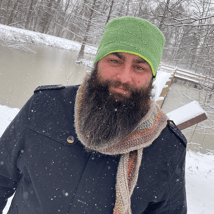
You're Not Just the Apps Guy Anymore; Embracing Cloud DevOps -John Richards
John is the Head of Developer Relations at Paladin Cloud, an open source security as code platform. I enjoy finding ways to connect people and evangelize open source.
I live near St. Louis, MO with my wife and clowder of cats. Join his session to learn how moving to the cloud has exponentially increased the work of developers. Testing, security, and other disciplines have embraced shift left philosophies, which has often just meant shifting it onto the developer plate. DevOps has become crucial because developers are now cloud developers, responsible for operating large portions of the technology stack while creating and maintaining their applications. In this session, we’ll look at effective ways to handle moving applications to cloud environments and how the extra workload of cloud DevOps also brings unique opportunities...and how not to drown in all that information.
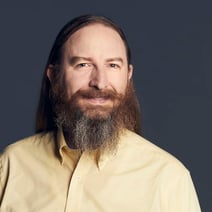
Horizontal Autoscaling with Kubernetes -Rob Richardson
Rob Richardson is a software craftsman building web properties in ASP.NET and Node, React and Vue. He’s a Microsoft MVP, published author, frequent speaker at conferences, user groups, and community events, and a diligent teacher and student of high quality software development. Rob posits the question, "Now that the app is running in Kubernetes, how do we scale it to meet demand? What metric should we use? CPU? Requests? something else?" Let’s dig into why we auto-scale, and how we auto-scale with lots of examples. Finally we’ll look at potential pitfalls and gotchas like how to scale to 0 and how to avoid scaling too big for your budget. Come learn how to scale with Kubernetes.

Retro: Operating an Event Driven Platform –Daniel Selans
Dan is the co-founder and CTO of Streamdal.com, a streaming data performance monitoring company. Dan previously worked at companies such as InVisionApp, New Relic and DigitalOcean and before that, spent over 10 years doing integration and R&D work at data centers. In this talk, Daniel will detail how our team went about building out our event driven architecture. We will talk about what worked, what was painful and what we would do differently in the future. Participants will leave with a deeper understanding of the benefits of event driven architectures, the requirements for implementing and operating such systems and the most importantly - be able to spot the most common pitfalls well ahead of time.
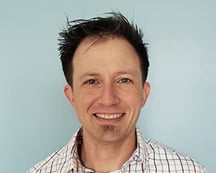
Blending Product Thinking with Architecture –Joel Tosi
Joel is Owner and Co-Founder of Dojo & Co. For the past 12 years, Joel has been coaching organizations like Target, Northwest Mutual, Nielsen, RR Donnelly, Thomson Reuters, Disney, Pearson, and Verizon in developing new product delivery practices. He has been a dojo coach for more than 6 years. In this session we will walk through visualizations that help teams blend product thinking with architecture. Along the way, we will look at microservices and domain modeling as well as chaos engineering and fault tolerance - blending all of these into a context that is consumable by all and gives the right emphasis at the right time. Leave this session with simple visualizations and approaches that you can apply immediately.

Concero is a recruitment firm specializing in the IT and finance/accounting industries. We are connectors and thrive off joining the right people and businesses together. In fact, that is the definition of Concero in Latin and why we chose the business name. Concero offers contract, contract-to-hire, and direct-hire placement services to organizations looking for professionals — from entry-level to the c-suite — throughout the United States.